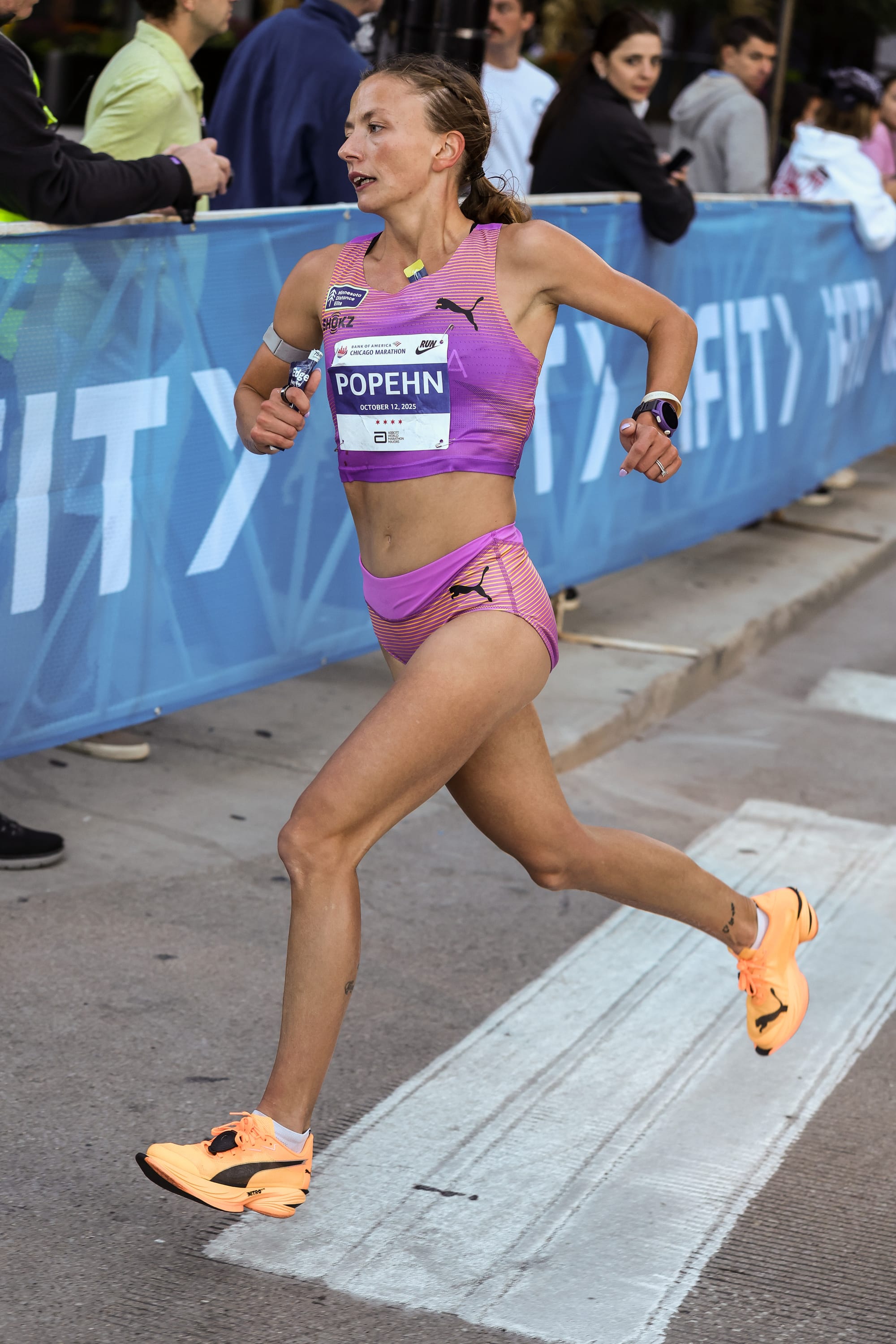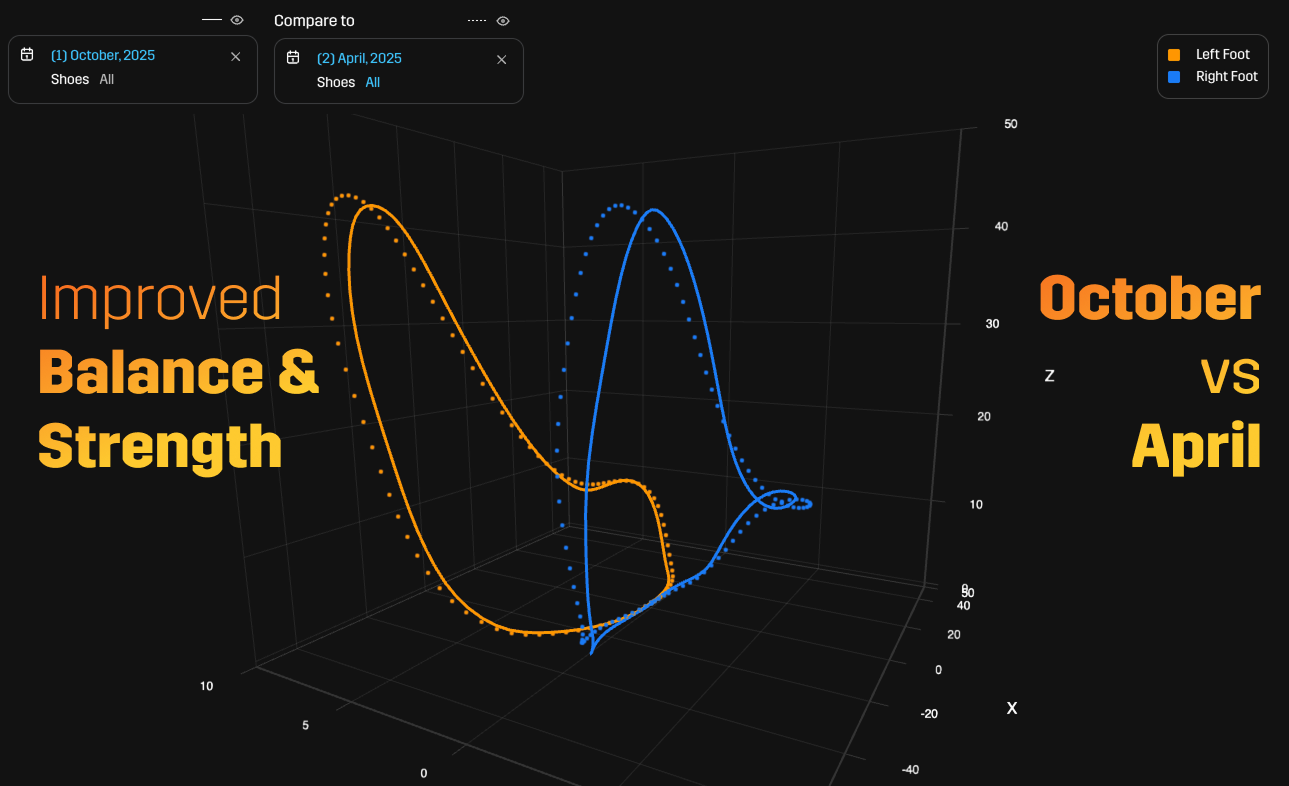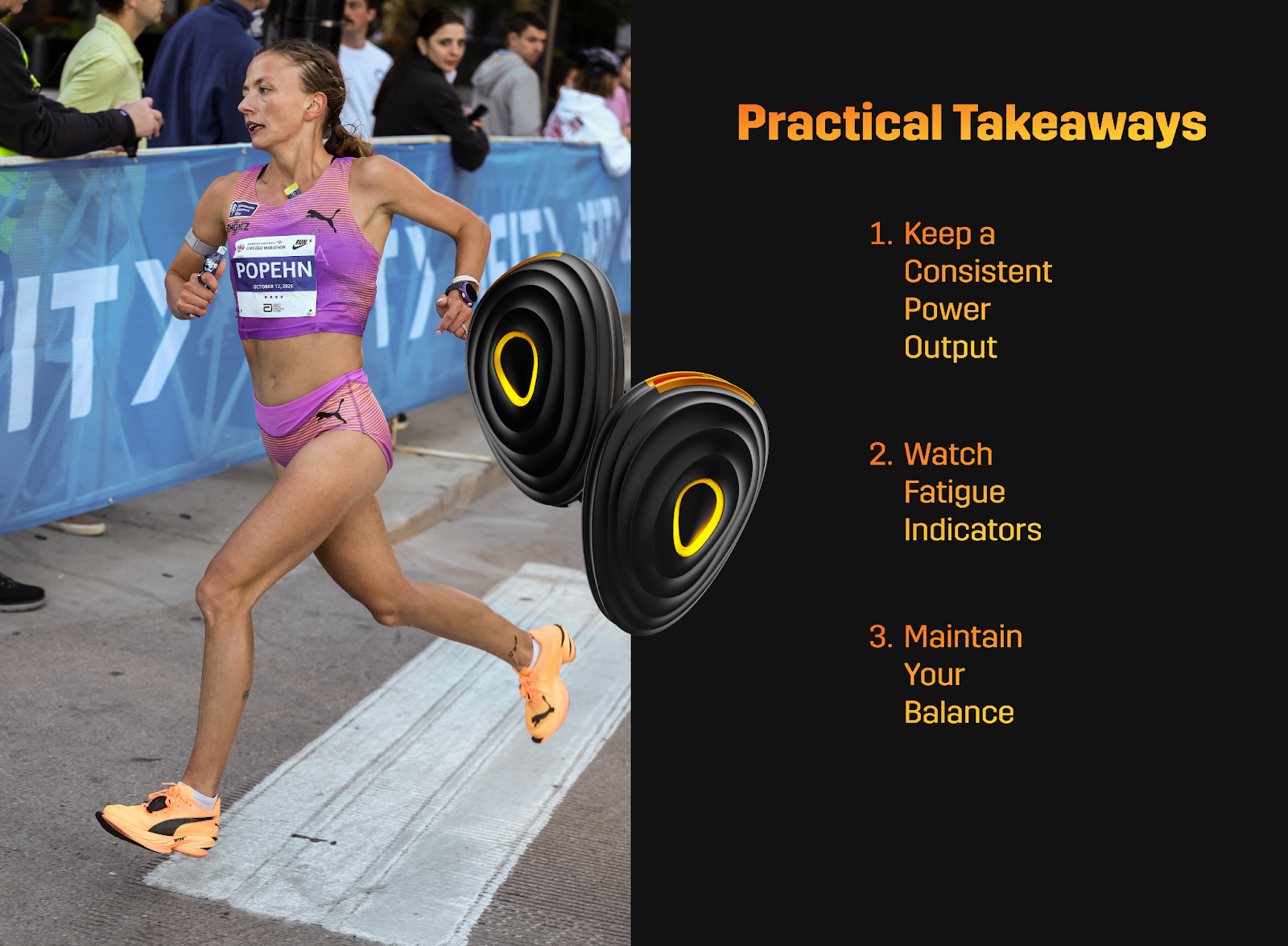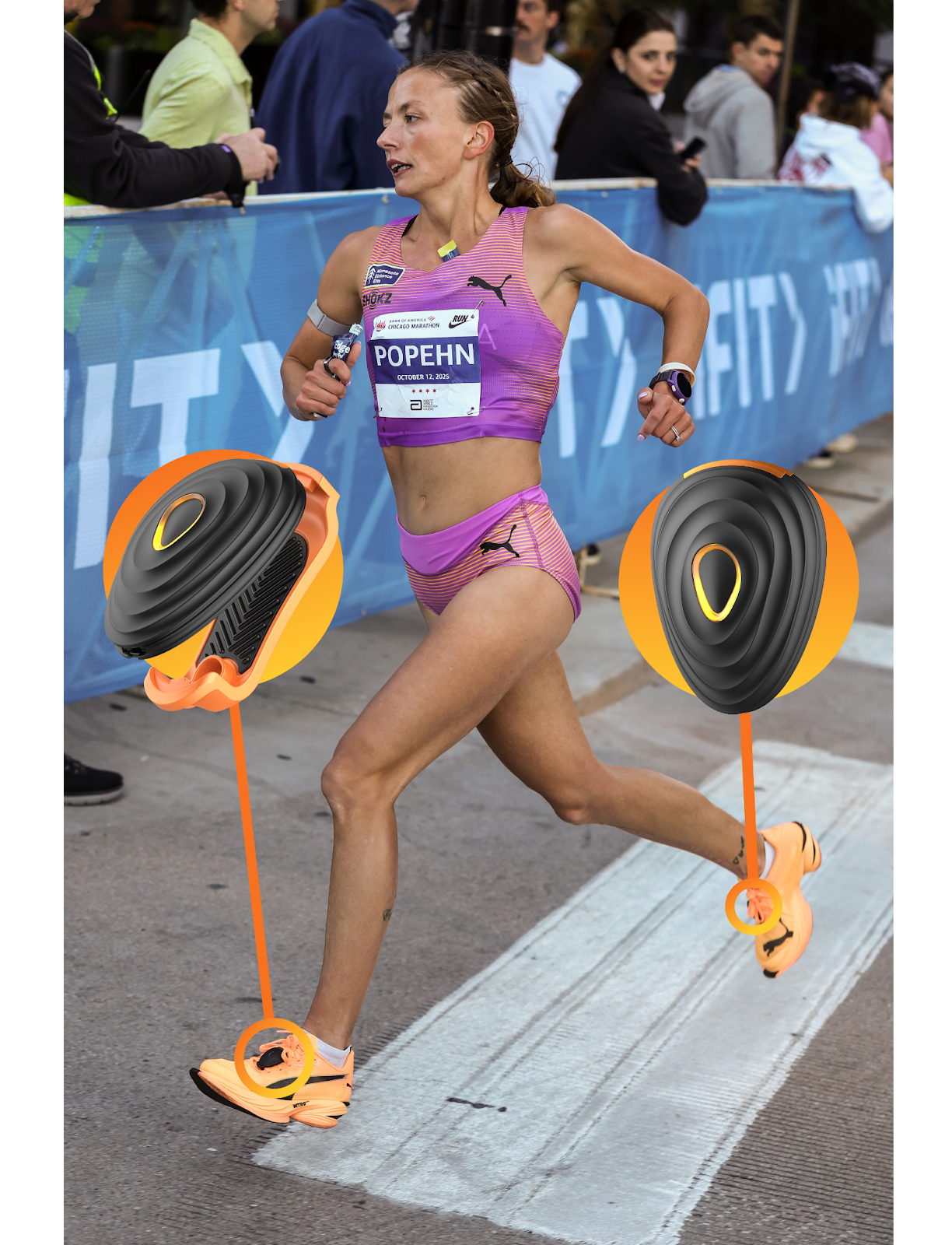Inside the Data: Dakotah Popehn Finishes 7th Place Overall, 2nd American, & Sets a Personal Best at the Chicago Marathon

Dakotah finished in 2:24:21, securing 7th place overall and 2nd American while improving her personal best by 19 seconds. The performance itself tells one story, but the Stryd data reveals something deeper about how she executed her race plan and where she's positioned for future performances.
Let’s examine the data to understand how Dakotah approached this race and what the metrics tell us about racing at the edge of one's current fitness.
Disciplined Pacing & Smart Racing with Power

One of the clearest indicators of effective marathon execution is consistency in power output, and Dakotah's data shows careful discipline through most of the race.
For the entire first half of the marathon, Dakotah maintained power within 1% of her average. This type of consistency represents an ideal pacing strategy for her goal of a 2:20 finishing time, where an athlete avoids the common pitfall of starting too aggressively while still maintaining competitive positioning.
Through the third quarter of the race, extending to approximately mile 19, her power remained within roughly 2.5% of her first-half average. This continued consistency through three-quarters of the marathon demonstrates effective fatigue management during the most tactically important section of the race to push up to 7th position.

Understanding the Fatigue Profile
Stryd's advanced metrics provide insight into how an athlete's body responds to the accumulating stress of racing. In Dakotah's case, the fatigue indicators Ground Contact Time and Leg Spring Stiffness showed gradual, steady changes throughout the race.
What's important here is the pattern: The metrics showed progressive fatigue accumulation, which is expected over 26.2 miles, but crucially, there were no sudden changes or signs of mechanical breakdown. The gradual nature of these changes, combined with the power profile, suggests that the drop in the final quarter came from cumulative fatigue rather than a breakdown in form or a pacing miscalculation.
This pattern indicates that Dakotah ran close to the upper limit of what her current fitness could sustain on the day. This pattern is supported by the power data: The final quarter, covering the last 6.5 miles from around mile 19 to the finish, showed power dropping approximately 8% from her first-half average.

The early pacing was necessarily aggressive in order to position herself to meet her goal of PRing by 4+ minutes and placing highly. The result is exactly what you expect from an elite athlete pushing to their limits and riding that line.

Recovery and Symmetry: Her Strongest Build yet
The balance metrics from Dakotah's Stryd Duo provide important context about her recovery from the foot injury she experienced during the Boston Marathon earlier this year.
Throughout the Chicago Marathon, her balance metrics remained essentially 50/50 between left and right, maintaining symmetry from start to finish. This held true even as fatigue accumulated in the later miles. The consistency of these metrics demonstrates full recovery from the earlier injury and shows that she's not developing compensatory movement patterns under fatigue.
This symmetry matters for performance because asymmetric loading often appears when runners begin to break down mechanically or unconsciously protect an area of discomfort therefore hurting their running efficiency. The fact that Dakotah maintained balanced mechanics throughout the race suggests she has rebuilt durability after the injury and was able to race without excess mechanical limitations.

Power Output in Context: Comparing Across Races
When comparing Dakotah's Chicago performance to her Boston Marathon run from earlier this year, the wind-normalized power output was essentially the same between the two races.
This comparison is useful for understanding fitness trends. Boston presented challenges with both the course profile and her developing injury, while Chicago allowed for more controlled pacing execution. Running the same power output in different contexts, with an improved finishing time in Chicago, suggests that Dakotah has maintained her fitness level from Boston while improving her ability to execute a consistent race plan, especially given her improved form and durability.
This stability in power output across different race scenarios provides a useful baseline for understanding her current capabilities and helps inform training decisions moving forward.

Practical Takeaways
Dakotah's Chicago Marathon performance illustrates several principles that apply across different levels of marathon racing.
Keep a Consistent Power Output: Consistent power in the early and middle portions of a race allows athletes to maximize performance potential.
Watch Fatigue indicators: Fatigue indicators help distinguish between expected physiological fatigue and mechanical breakdown. The gradual accumulation pattern in Dakotah's metrics, without sudden changes, confirms that her pacing strategy was appropriate for her fitness level rather than overly aggressive.
Maintain Your Balance: Balance metrics provide objective evidence of recovery and mechanical stability. The symmetric data throughout Dakotah's race demonstrates that injury recovery extended beyond simply being pain-free to include full restoration of mechanical function.

Powering Your Own Breakthroughs with Stryd
Dakotah Popehn's Chicago Marathon represents a solid progression in her racing. The combination of disciplined early pacing, sustained effort through the middle miles, and complete recovery from her Boston injury positions her well for continued development.
For runners at any level, Dakotah's race demonstrates how data-driven racing strategy supports better execution. Understanding power consistency, fatigue accumulation patterns, and mechanical balance can help any athlete make more informed decisions about pacing and race management.
Ready to see inside your own data? Check out Stryd Duo today and start transforming your running journey.
